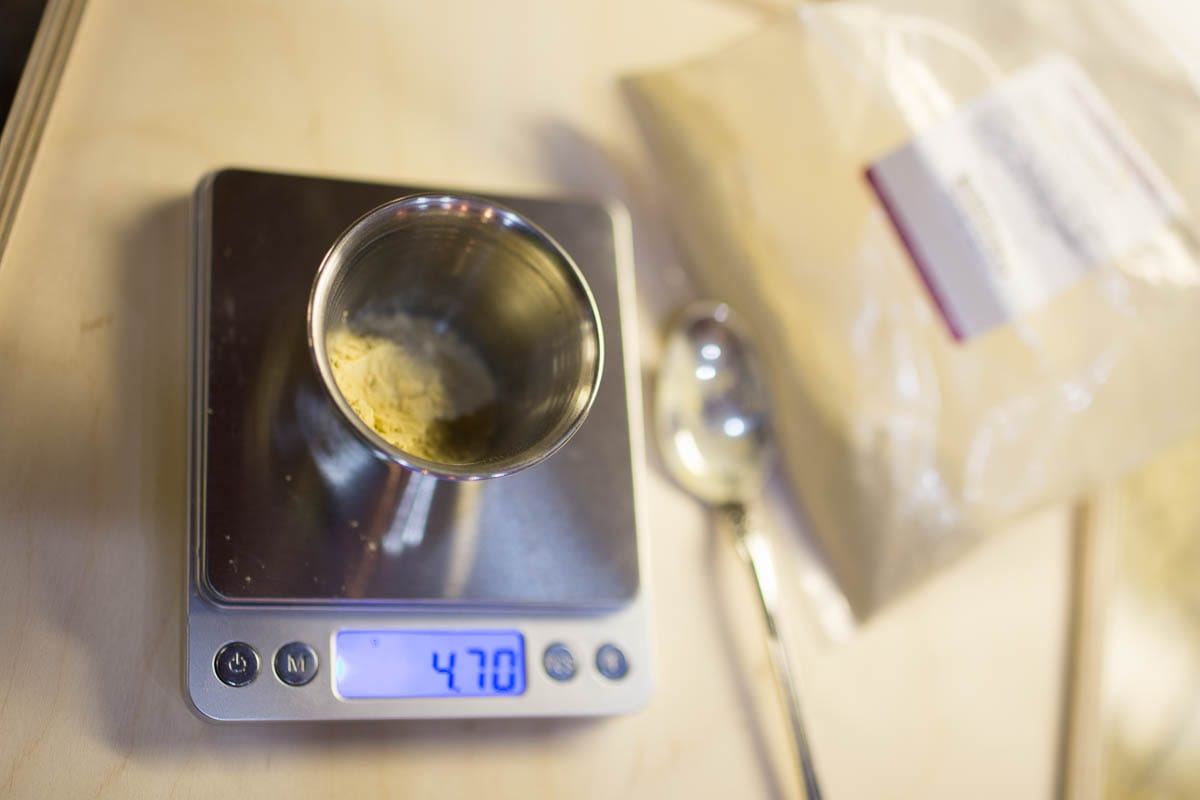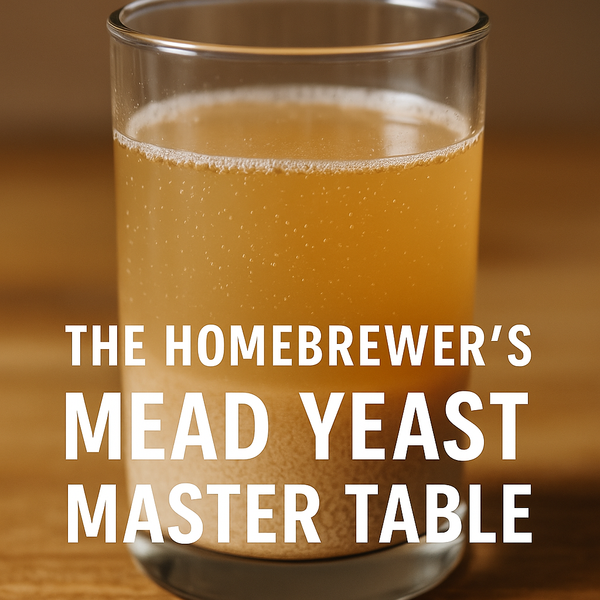SNA vs TOSNA: A Comparitive Guide to Nutrient Addition Methods in Meadmaking
Discover the key differences between SNA (Staggered Nutrient Additions) and TOSNA (Tailored Organic Staggered Nutrient Additions) in meadmaking. This comprehensive guide explores traditional and organic nutrient management methods, helping both novice and experienced meadmakers choose the right appr

Most of us have failed fermentation when making mead at some point, resulting in stuck gravity, off-flavors, stinky aromatics, or rocket-fuel fusel alcohols. When reviewing "save my mead" requests on social media and Reddit, we see repeatedly that makers have failed to integrate a nutrient regimen, likely the result of the myths that time and aging will cure all. Let's be clear, aging is another process that can help with flavor integration, micro-oxidation, and wood flavor extraction. It is not a cure-all. Even adding SNA/TOSNA is not guaranteed to work every time, but this step will go a long way in facilitating an ordered and controlled fermentation.
When it comes to making mead, proper nutrient management is crucial for achieving a successful fermentation. While honey provides an excellent source of fermentable sugars, it lacks many essential nutrients yeast needs to thrive. Pure honey is naturally low in nitrogen, amino acids, and other micronutrients that yeast cells require for healthy reproduction and fermentation. During fermentation, yeast cells undergo aerobic respiration (with oxygen) for reproduction and anaerobic fermentation (without oxygen) to produce alcohol. Still, yeast needs proper nutrition throughout both processes to maintain health and avoid stress-induced off-flavors. This is where nutrient addition strategies become essential, with two popular methods emerging in the meadmaking community: Staggered Nutrient Additions (SNA) and Tailored Organic Staggered Nutrient Additions (TOSNA). Another popular option with successful makers is to put the entire nutrient addition up front, but this has a few caveats that staggered additions address.
In both cases below, the maker needs essential information, such as the OG of the mead must, and the ability to adjust the amounts based on any fruit additions that may provide some yeast-assimilable nitrogen (YAN). Both methods also require the proofing of dry yeasts, using a product called GoFerm or GoFerm Protect. This ensures that the yeast has the opportunity to properly hydrate with the necessary supportive nutrients and become very active. Both also call for tempering the yeast slurry to your pitching must temperature to reduce shock and ensure active initial replication. Often, you will pitch more yeast than you would with beer, because you are typically also dealing with very high relative gravity compared to beer.
Understanding SNA (Staggered Nutrient Additions)
SNA is a traditional method popularized by Ken Schramm and Steve Piatz. It involves adding nutrients at specific gravity points throughout fermentation. This approach typically uses DAP (Diammonium Phosphate) and Fermaid-K as primary nutrients. There are slight variations. This approach was designed to leverage easily obtained nitrogen sources before the availability of certified organic sources and complies with TTB requirements. It should be noted that there is very little chemical difference between so-called artificial or manufactured nitrogen sources.
Sugar break is when the fermentation has reduced the fermentable by 1/3 or 1/2 of the amount.
Learn more about SNA at The Meadmakr SNA Protocol Guide
- Key Components:
- GoFerm for yeast hydration
- DAP (Diammonium Phosphate)
- Fermaid-K
- Other synthetic nutrient blends
- Timing:
- Initial addition at pitch
- 24 hours after pitch
- 1/3 sugar break
- 1/2 sugar break
Understanding TOSNA (Tailored Organic Staggered Nutrient Additions)
TOSNA, developed by Sergio Moutela, takes a more organic approach, using Fermaid-O as the primary nutrient source. This method focuses on providing organic nitrogen sources that are more easily assimilated by yeast. It gives a slight pH buffering effect, helping to prevent fermentation stalls when the acid levels are too high. TOSNA also meets TTB dosage requirements and avoids the use of extragenous DAP.
For detailed TOSNA calculations and guidelines, visit Mead Made Right's TOSNA Calculator
- Key Components:
- Fermaid-O (organic nitrogen source)
- Optional Go-Ferm for rehydration
- There are options for using some level of DAP if desired
- Timing:
- 24 hours after pitch
- 48 hours after pitch
- 72 hours after pitch
- 96 hours after pitch or at 1/3 sugar break
Comparing the Benefits
SNA Benefits:
-
- More cost-effective initially
- Well-documented and traditional approach
- Faster fermentation completion
- Readily available materials
TOSNA Benefits:
-
- Reduced risk of off-flavors
- More natural approach
- Gentler on yeast cells
- Better for high-gravity meads
Practical Applications
Both methods can be effective for different styles of mead:
Traditional Meads:
Both methods work well, but TOSNA may provide cleaner flavor profiles, especially in delicate traditional (honey-only) meads. I highly suggest bench trials with any new honey to determine your preferred method. Both batches should be identical (starting gravity, honey quantity, water volume, and yeast pitch)
Melomels (Fruit Meads):
SNA can be particularly effective due to the additional nutrients from fruit additions, generally seeing a slightly higher activity level in the beginning of fermentation. However, TOSNA can help preserve subtle fruit esters and characteristics.
High-Gravity Meads:
TOSNA's organic nitrogen sources may be particularly beneficial for high-gravity meads where yeast stress is a significant concern. If using SNA, consider staggering honey additions through the fermentation if the OG is above 1.115.
Conclusion
Both SNA and TOSNA are valid approaches to nutrient management in mead making. The choice between them often comes down to personal preference, mead style, and specific goals. TOSNA might be preferred for those seeking cleaner flavor profiles and using organic ingredients, while SNA remains a reliable and cost-effective method for many mead makers.
Pro Tip: Regardless of your chosen method, keep detailed records of your nutrient additions and fermentation progress, including gravity steps, pH, and tasting notes. This will help you refine your process and achieve consistent results.




